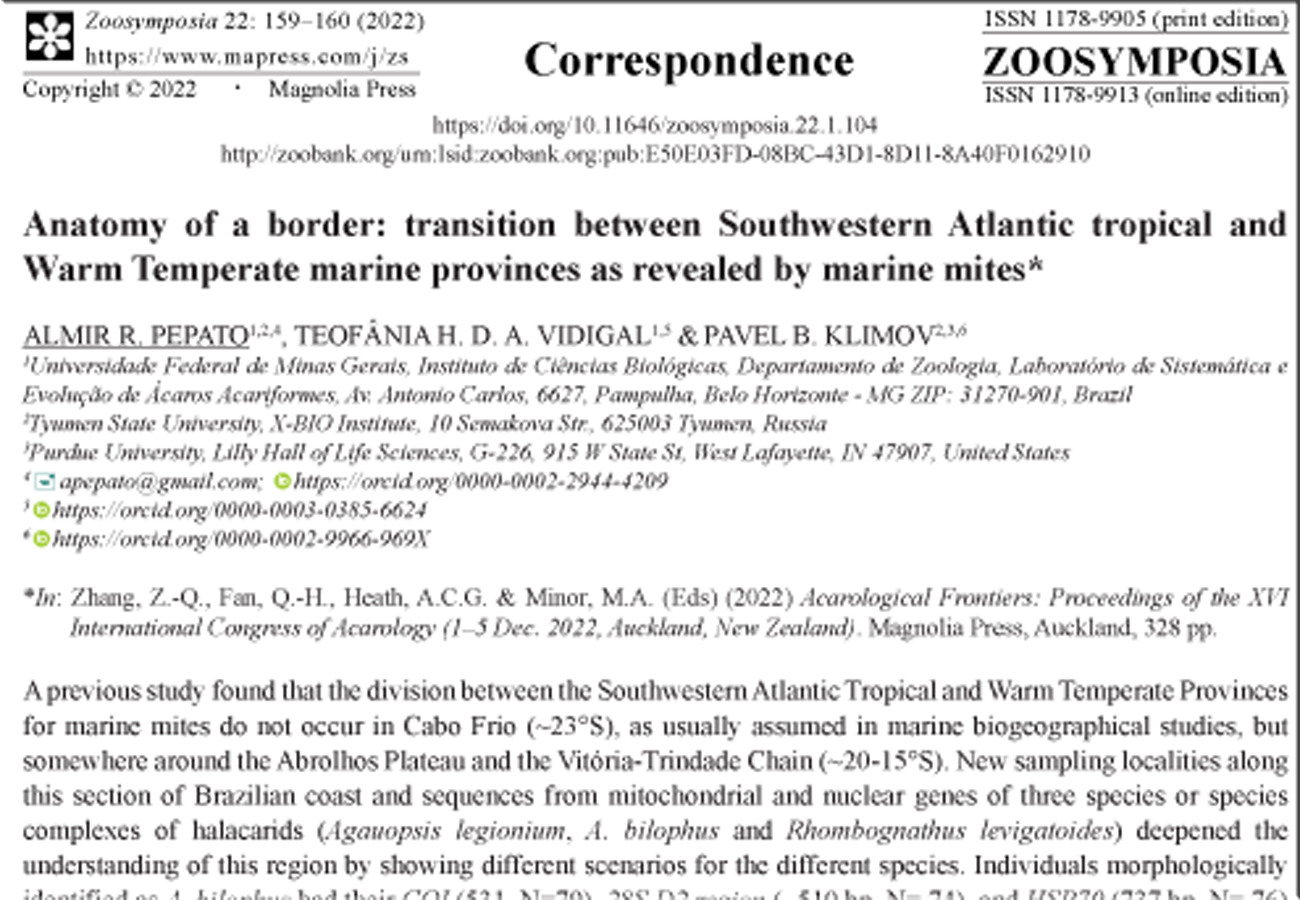Abstract
A previous study found that the division between the Southwestern Atlantic Tropical and Warm Temperate Provinces for marine mites do not occur in Cabo Frio (~23°S), as usually assumed in marine biogeographical studies, but somewhere around the Abrolhos Plateau and the Vitória-Trindade Chain (~20-15°S). New sampling localities along this section of Brazilian coast and sequences from mitochondrial and nuclear genes of three species or species complexes of halacarids (Agauopsis legionium, A. bilophus and Rhombognathus levigatoides) deepened the understanding of this region by showing different scenarios for the different species.
References
-


